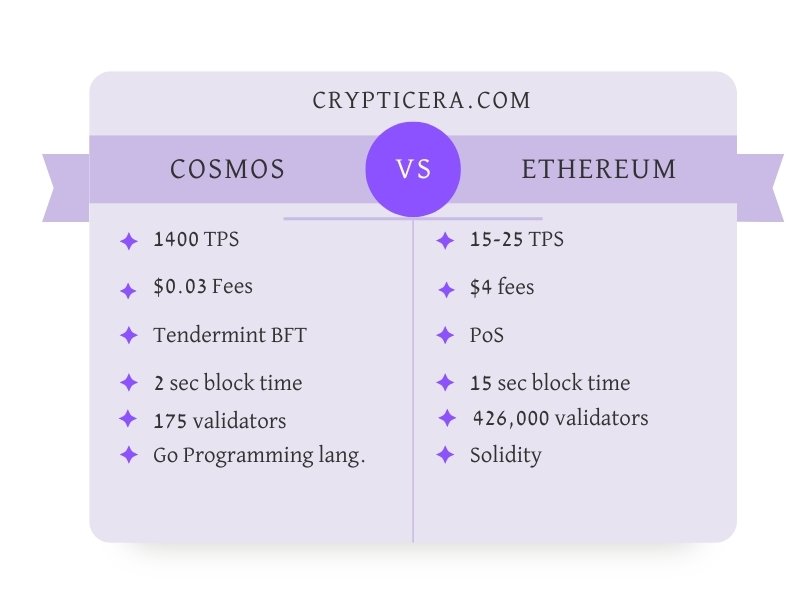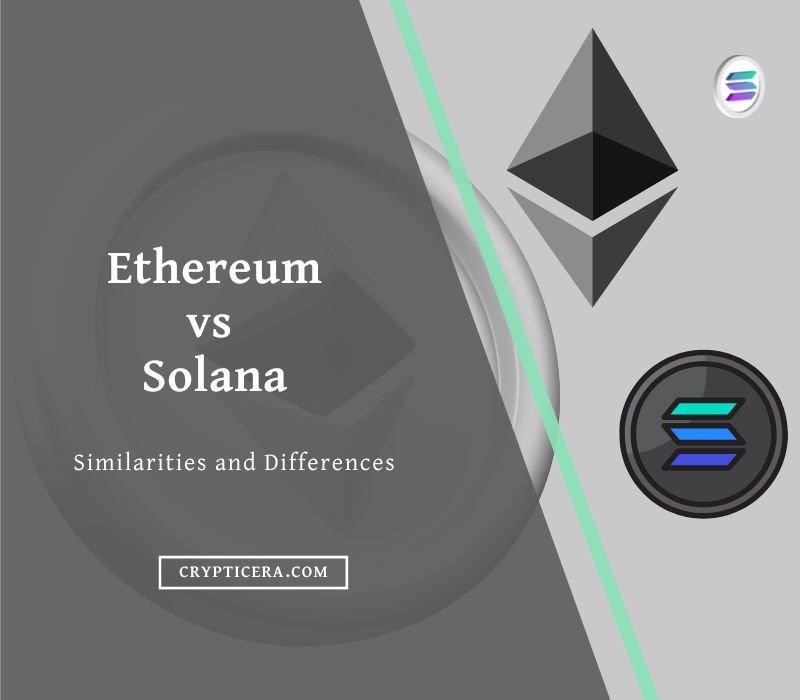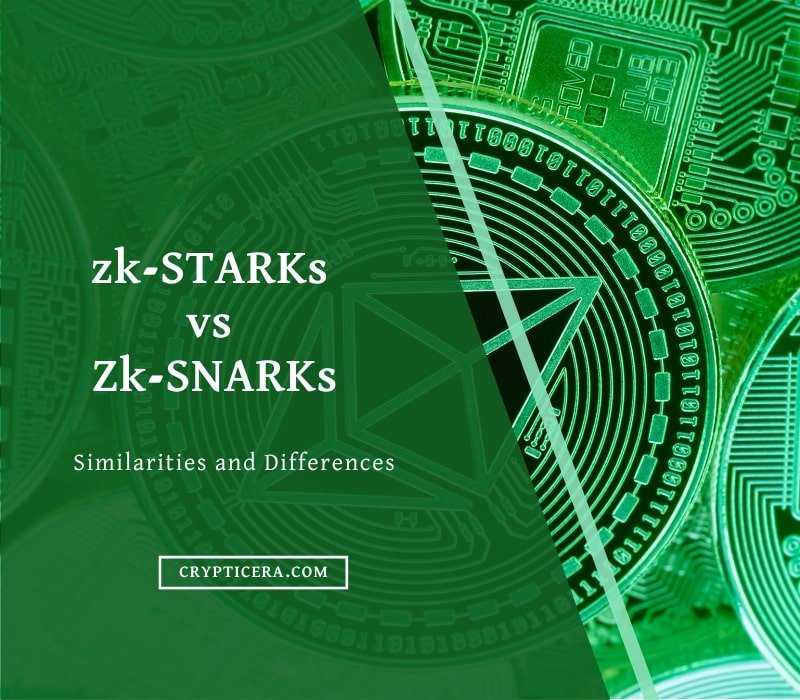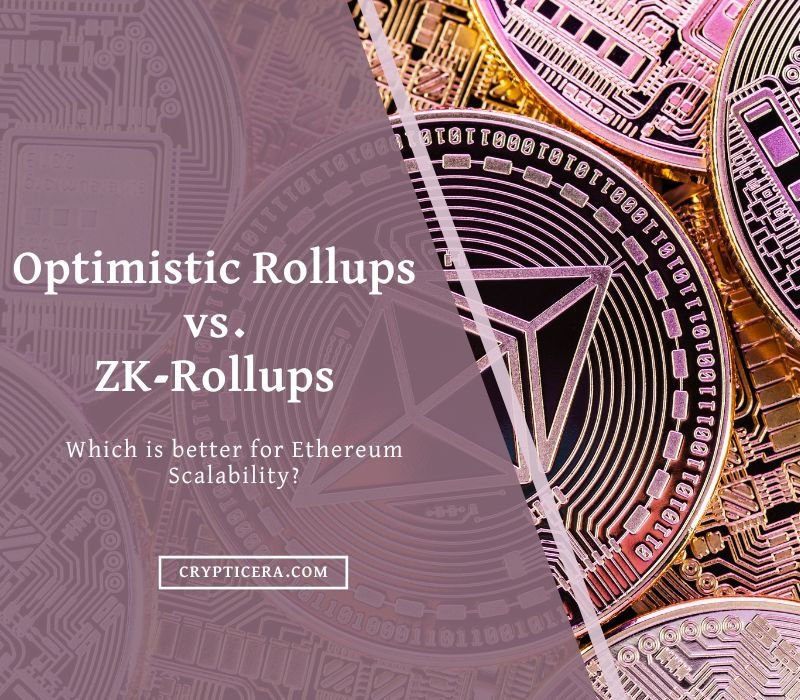As blockchain technology continues to evolve, two platforms have emerged as front-runners in the race for decentralized dominance: Cosmos (ATOM) and Ethereum.
Both have gained significant traction in recent years, with each offering its unique features and capabilities.
But when it comes to scalability, interoperability, and sustainability, which one comes out on top?
In this blog post, we’ll dive deep into the inner workings of Cosmos and Ethereum, comparing and contrasting their strengths and weaknesses.
How Cosmos is different From Ethereum
- Cosmos is a blockchain ecosystem that connects independent blockchains.
- Ethereum is a blockchain platform for building decentralized applications (dApps) and executing smart contracts.
- Cosmos uses a hub-and-spoke architecture, while Ethereum uses a single-chain architecture.
- Cosmos has its own consensus algorithm called Tendermint, while Ethereum uses a proof-of-Stake (PoS) consensus algorithm.
- Cosmos aims to increase interoperability between blockchains, while Ethereum aims to provide a platform for building decentralized applications.
- Cosmos allows for the creation of sovereign blockchains, while Ethereum only allows for the creation of smart contracts and dApps on its own blockchain.
| Key Points | Cosmos | Ethereum |
|---|---|---|
| Launched Date | March 2019 | July 2015 |
| Founders | Jae Kwon | Vitalik Buterin, Gavin Wood, Joseph Lubin |
| Market Cap | $3.48 Billion | $172 Billion |
| Transaction Speed | ~10,000 TPS | ~15-25 TPS |
| Block Time | ~2 seconds | ~15 seconds |
| Scalability | High | Low |
| Security | High | High |
| Consensus Mechanism | Tendermint BFT | Proof of Stake (PoS) |
| DApps Support | High | High |
| Programming Language | Go | Solidity |
What is Cosmos (ATOM)?

- Current Market Cap: $3,485,212,137
- Current Token Supply: 286,370,297 ATOM
Cosmos (ATOM) is a blockchain ecosystem made up of multiple independent parallel chains, known as zones, that can communicate with each other through the Cosmos hub.
The Cosmos network uses a consensus algorithm called Tendermint BFT, which allows for high transaction throughput and low latency.
The primary goal of Cosmos is to create an ecosystem of interconnected blockchain networks that can scale and interoperate with each other, allowing for the development of decentralized applications (dApps) and services.
How does Cosmos (ATOM) Work?
The Working of Cosmos depends on three Key mechanisms: The Tendermint Core consensus mechanism, Cosmos Software Developer Kit (SDK), and the IBC.
- Tendermint Core: Tendermint Core is the consensus mechanism used by the Cosmos network. It uses a form of proof-of-stake (PoS) consensus called Tendermint BFT, which allows for high transaction throughput and low latency. It also provides a mechanism for creating and managing validators, who are responsible for validating transactions and maintaining the state of the network.
- Cosmos Software Developer Kit (SDK): The Cosmos SDK is a software development framework that allows developers to easily build and deploy decentralized applications (dApps) on the Cosmos network. It provides a set of tools and libraries for building custom blockchain networks, as well as a modular architecture that allows for easy customization.
- IBC (Inter-Blockchain Communication Protocol): IBC is a protocol that allows for the interoperability between different blockchain networks within the Cosmos ecosystem. It enables the transfer of assets and data between different zones and allows for the creation of a network of interconnected blockchains. This allows for a more decentralized and scalable ecosystem, as well as greater flexibility for developers.
Pros and Cons of Cosmos
| Pros | Cons |
|---|---|
| Highly scalable and interoperable | Relatively complex for beginners to understand |
| Supports multiple independent blockchains | Requires significant hardware resources to run |
| Faster transaction processing times | Limited development and adoption compared to ETH |
| Provides easy access to staking and governance | Still a relatively new and untested blockchain |
| Low transaction fees | Limited number of wallets and exchanges support |
What is Ethereum (ETH)?

- Current Market Cap: $172,956,760,449
- Current Token Supply: 122,373,866 ETH
Ethereum is a decentralized, open-source blockchain platform that enables the creation of smart contracts and decentralized applications (dapps). It was first proposed in 2013 by Vitalik Buterin, a programmer and co-founder of Bitcoin Magazine.
Its native cryptocurrency is Ether (ETH), which is used to pay for transactions and computational services on the network. The Ethereum network also supports other cryptocurrencies and tokens, which can be built on top of its blockchain.
The Ethereum network is powered by a global network of nodes that validate and process transactions and maintain the state of the blockchain.
The Ethereum Virtual Machine (EVM) is a software environment that executes smart contracts on the network. Ether Blockchain is often used for initial coin offerings (ICOs) and decentralized finance (DeFi) applications.
Enhancing Ethereum Scalability
Ethereum utilizes L2s for consensus and data availability while executing transactions off-chain through rollups. Rollups batch transactions, compress them, and provide proof of transactions to L1, thus reducing Ethereum’s high gas costs and enabling the network to scale while maintaining decentralization.
There are two types of L2s: Optimistic Rollups (ORUs) and zkRollups (ZKRs). ZKRs have higher transaction capacity, but their implementation challenges and lack of EVM compatibility make ORUs the more likely scaling solution for Ethereum in the near future.
In addition to L2s, there are various scaling solutions available at both L1 and L2 levels, including call-data compression, proto-dank sharding, and EIP-4488. Moreover, L3s can enhance scalability by settling to L2 instead of L1, opening up new possibilities for application-specific rollups.
L2s also offer composability, with rollups like Optimism and Arbiturm hosting an expanding ecosystem of protocols and applications. This composability can be improved in the future through the adoption of messaging protocols like Layer 0 and Nomad, which enhance interoperability between rollups, but may introduce new risks and trust assumptions.
Read: Arbitrum Vs Optimism: Comparison Between Ethereum’s L2?
Pros and Cons of Using Ethereum
| Pros | Cons |
|---|---|
| Decentralization | Scalability issues |
| Smart contract capabilities | Energy inefficiency |
| Immutable record keeping | Vulnerability to hacking attacks |
| Diverse range of use cases | Lack of formal governance |
| Active developer community | Potential for fraudulent ICOs |
| Robust DApps Ecosystem | Difficulty in upgrading to new versions |
| High liquidity of Ether token | Regulatory uncertainty |
| Strong brand recognition |
Cosmos vs Ethereum: The Ultimate Comparison

Ecosystem
Ethereum is considered the first and most popular general-purpose smart contract platform. It has a large and active developer community, and many projects and dapps have been built on its blockchain.
Ethereum’s ecosystem is focused on creating decentralized applications, and it has its own programming language called Solidity for writing smart contracts.
The Ethereum network also supports other cryptocurrencies and tokens, which can be built on top of its blockchain.
The most Popular Tokens in Ethereum Ecosystem are:
- Dai (DAI): Stablecoin
- The Shiba Inu (SHIB): Meme Coin
- The SandBox (SAND): Metaverse token
- Loopring (LRC): Build DEXs
- Enjin Token (ENJ): Gaming
Cosmos, on the other hand, is a newer blockchain platform that aims to create an ecosystem of interconnected blockchains, called the Cosmos Network, through its Inter-Blockchain Communication (IBC) protocol.
Cosmos is designed to be more flexible and modular than Ethereum, and it allows developers to build custom blockchains that can interoperate with other blockchains in the Cosmos Network.
The most popular project built on Cosmos SDK:
Terra LUNA: Already Depeggeed- osmosis
- Juno
- Stargaze
- EVOMos
Market Cap
The market capitalization of Cosmos (ATOM) as of January 13th, 2023 is around $3.48 billion.
While this is a substantial amount, it is still significantly smaller than the market capitalization of Ethereum which is currently around $172 billion.
Smart Contract Language
Cosmos SDK uses multiple programming languages like Go, Javascript, etc.
Ethereum uses its own proprietary language, Solidity, for smart contract development.
This means that developers have more flexibility and choice when building on Cosmos SDK, while Ethereum limits them to Solidity.
Scalability
Cosmos and Ethereum are both blockchain networks, but they have different approaches to scalability.
Cosmos uses a system of interconnected blockchains called “zones” that can communicate with each other through a central hub called the “Inter-Blockchain Communication” (IBC) protocol.
This allows for horizontal scalability, where the network can handle more transactions by adding more zones.
Ethereum, on the other hand, is working on several solutions to achieve scalability, including sharding, which is a form of horizontal scalability.
It is also implementing Ethereum 2.0 (Serenity) to improve the performance of its network by introducing a Proof of Stake consensus mechanism.
Transaction Speed
The Cosmos network utilizes a unique consensus mechanism called Tendermint BFT, which allows for fast and secure transactions with a block time of just 3 seconds.
Cosmos can achieve a transaction speed of 10,000 TPS.
The Ethereum network utilizes a proof-of-Stake consensus mechanism, and the current block time is between 10-20 seconds with an average of 12.08 seconds.
Ethereum can achieve a transaction speed of 18-25 TPS after its PoS Merge.
When it comes to transaction speed, Cosmos clearly has the upper hand with its 3-second block time, compared to Ethereum’s 15 seconds.
This means that transactions on the Cosmos network are five times faster than those on the Ethereum network.
Security and Decentralization
Comparing the Cosmos and Ethereum network security is like comparing the vastness of the cosmos to the intricate complexity of a diamond.
Just as the cosmos is vast and seemingly infinite, the Cosmos network offers a decentralized and highly secure environment for its users.
Similarly, Ethereum, like a diamond, has a complex structure that is highly secure and durable, providing a safe and reliable platform for its users to transact on.
The Cosmos network is built on a system of interconnected blockchain networks, known as the Cosmos Hub and zones. Each zone operates independently but can communicate with one another through the Cosmos Hub.
This allows for greater scalability and flexibility in terms of security, as each zone can have its own set of security protocols.
Additionally, the Cosmos network uses a consensus mechanism called Tendermint BFT, which also provides high security to the network.
On the other hand, Ethereum is a single blockchain network that uses a consensus mechanism called Proof of Stake (PoS).
The validators or “Stakers” are responsible for the high security and decentralization of the blockchain network.
Is Cosmos better than Ethereum?
Here are some factors where Cosmos is better than Ethereum blockchains-
- Cosmos is more scalable, and interoperable, and has a better governance model and consensus algorithm than Ethereum.
- Both platforms have active developer communities and growing ecosystems, but Ethereum has some limitations and security concerns with its Proof-of-Stake algorithm.
| Features | Cosmos | Ethereum |
|---|---|---|
| Scalability | ✔️ | |
| Interoperability | ✔️ | |
| Governance | ✔️ | ✔️ |
| Security | ✔️ | ✔️ |
| Development | ✔️ |
ATOM Vs ETH: Token
ATOM is the native cryptocurrency of the Cosmos blockchain network. ETH token is the native cryptocurrency of the Ethereum blockchain network. ATOM is used for staking, governance, and transaction fees on the Cosmos network.
ETH token is used for transaction fees and gas on the Ethereum network, and also for staking in ETH 2.0. Both ATOM and ETH tokens can be used for decentralized applications and smart contracts on their respective networks.
ATOM uses a Proof-of-Stake consensus algorithm, while Ethereum currently uses Proof-of-Work but is transitioning to Proof-of-Stake in ETH 2.0.
Conclusion
In conclusion, both Cosmos and Ethereum have their own unique strengths and weaknesses. Cosmos focuses on interoperability and scalability, while Ethereum is the leading smart contract platform.
Both projects are still relatively new and have the potential for significant growth in the future.
Ultimately, it will depend on the specific use case and the needs of the user as to which platform is the best fit.
However, both projects have the potential to play a major role in shaping the future of the blockchain industry.
Must Read Ethereum Comparisons:
- Hedera Hashgraph Vs Ethereum Blockchain
- What Is Ethereum Name Service & How To Buy ENS Domain?
- How To Build To-Do List App On Ethereum Blockchain In 15 Minutes?
- Ethereum Vs Cardano Vs Polkadot: The Complete Comparison
- Bitcoin Vs Ethereum Vs Litecoin
- Bitcoin Vs Ethereum
- Ethereum Vs Solana Vs Polygon
- Ethereum Vs Solana: The Ultimate Comparison?


